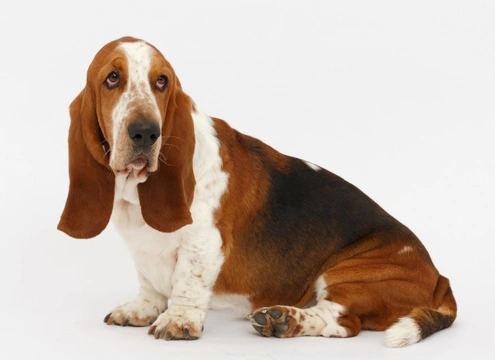
How to keep your Basset hound’s ears clean and healthy
The Basset hound is one of the most distinctive-looking dog breeds of them all, being as they are fairly muscular and large bodied with incredibly short legs! The Basset hound’s unique appearance is enhanced by their hugely long, drooping ears – which often look very comical flapping around when the dog is running flat out.
The breed’s very long ears actually serve a specific purpose – Basset hounds are scent hounds, with a formidable and very sensitive sense of smell. When a Basset is following a scent with their head close to the ground sniffing around, their ears pick up tiny scent particles and bring them closer to the dog’s face, which helps them to stay on the scent even under challenging conditions.
However, these very long ears can also be prone to developing problems due to their sheer size and length – which means that the Basset hound owner needs to be aware of the common Basset hound ear issues that can develop, and know how to mitigate against them.
In this article, we will explain how to keep your Basset hound’s ears clean and healthy, and outline some of the potential ear problems in Basset hounds to look out for. Read on to learn more.
Why are the Basset hound’s ears prone to problems?
Basset hounds are by no means plagued by ear problems, and your dog may go through their whole life without any issues if you keep their ears clean and check them regularly for signs of problems. However, the size and shape of the dog’s ears make them more prone than most breeds to developing irritations, infections, and parasites.
This is because the breed’s long ears may drag the ground when their heads are down, as well as ending up in their food and water when they are eating! This can introduce foreign bodies like dirt, muck and bacteria into the ears, which can cause infections and other problems.
Additionally, the fully folded-over ear closes the ear canal, making it harder for earwax, moisture and debris to work its way out naturally, and providing an environment in which bacteria, yeast and parasites can thrive.
What sort of ear problems are Basset hounds prone to?
If you check your dog’s ears over regularly, keep them clean, and know what sort of problems to look out for, your dog’s ears are likely to remain healthy and free from problems. However, some o the most common ear problems that Basset hounds can develop include:
- Bacterial ear infections.
- Parasitic infections like ear mites, which can be hard to eradicate.
- Excessive build-up of earwax, which can occlude the ear canal, place pressure on the eardrum and become solid and hard to remove.
- Fungal infections like yeast infections within the ear.
- Sores and inflammation within the ear canal, due to grit, muck, food particles or moisture becoming trapped within the ear.
How to clean and check your Basset hound’s ears
It is important for Basset hound owners to check and clean their dog’s ears regularly, to avoid problems like infections and irritations developing.
If you get into the habit of doing this every couple of days while your dog is still young, they should be happy to tolerate it and you will soon get into a routine that will take just a few minutes at a time. One vital thing to remember is that you should never push cotton buds or anything else into your dog’s ear canal – this can cause damage, pain and other problems, such as impacting earwax and pushing dirt and debris further into the inner ear itself.
To clean your Basset hound’s ears, you will need a gentle dog-safe cleaning solution, a clean cloth, some cotton wool, and possibly some cotton buds too.
Lift your dog’s ears and clean the outer part of the bottom side of the ears using your cleaning solution to gently get into all of the curls and crevices of the ears, ensuring that you dry the ears thoroughly and don’t leave them damp afterwards.
Clean the visible inner part of the ear gently in the same manner, remembering of course not to push anything into your dog’s ear. If the fur in their inner ear grows overly long or becomes dirty and clumpy, you may want to consider trimming it down to help with cleaning and avoid it collecting muck. However, don’t do this unless you need to, as this fur itself helps the ears to work out dirt and muck.
When you are cleaning your dog’s ears, keep a look out for a range of different potential signs of problems. A strange or unpleasant smell may indicate an infection, and you should also look for irritation, sore spots, redness, inflammation and signs of mites or other nasties.
When you have finished cleaning your dog’s ears, try to hold them open for a few minutes to allow oxygen to circulate, helping to ensure that they are perfectly dry and aiding with keeping the ears themselves healthy.
If your dog tends to dip their ears into their food bowl, consider using an inner and outer bowl to help to keep the dog’s ears clear of their dinner, and clean the ears after mealtimes to prevent food from working into the dog’s ears or drying into hardened muck that can be more challenging to remove once it has dried.



